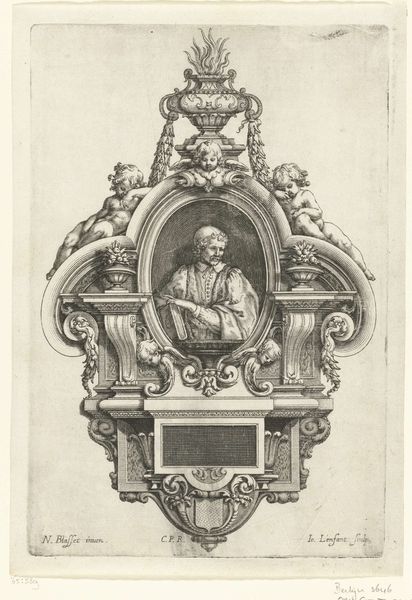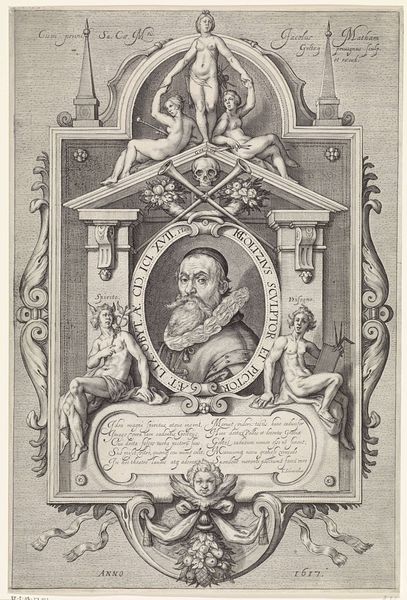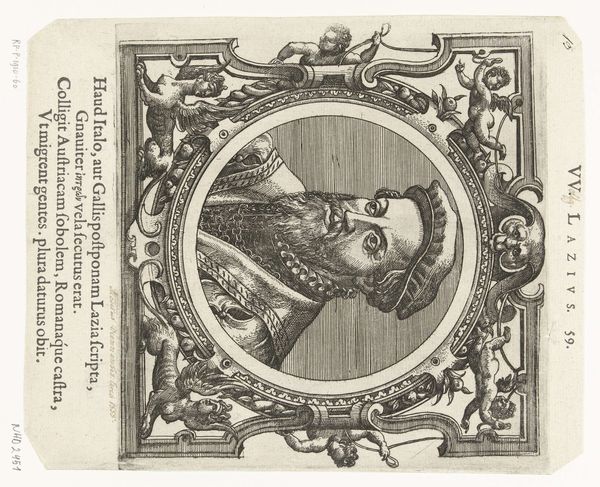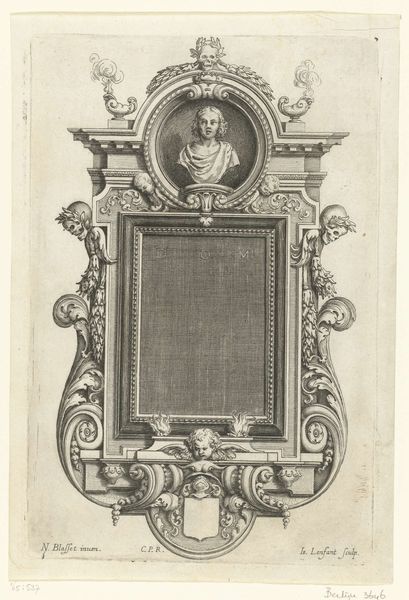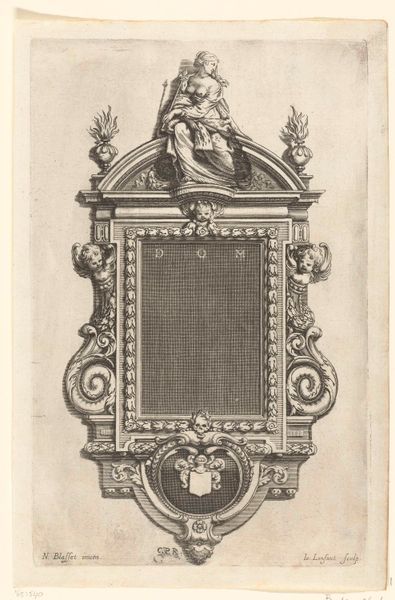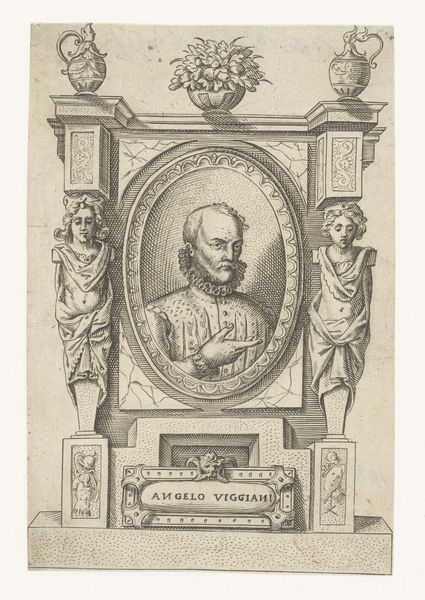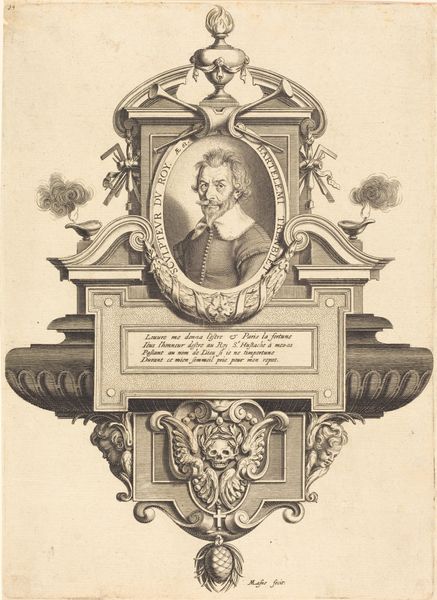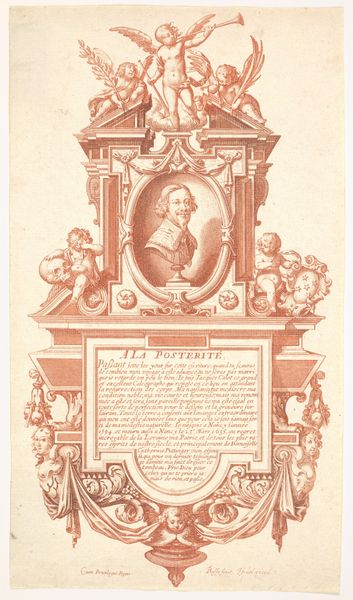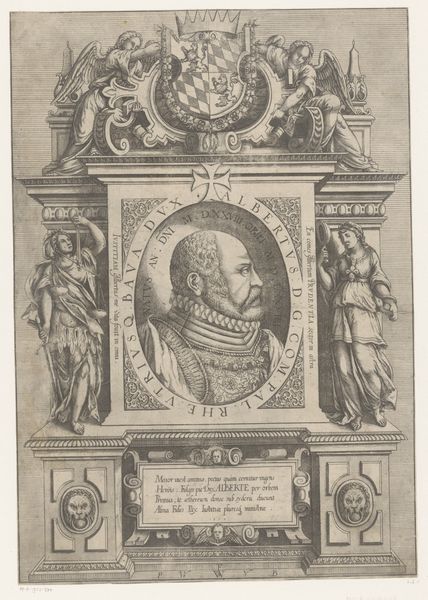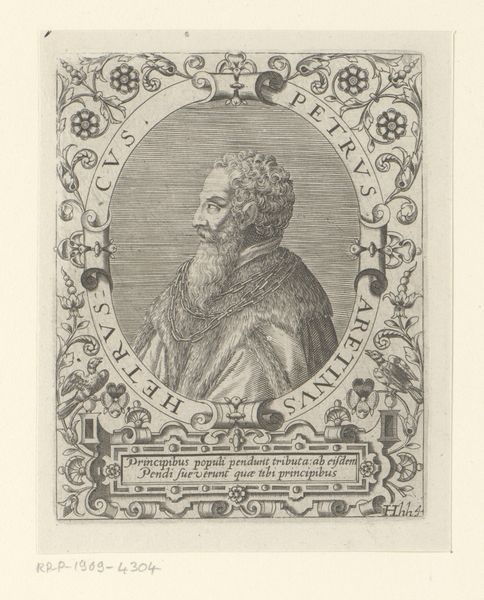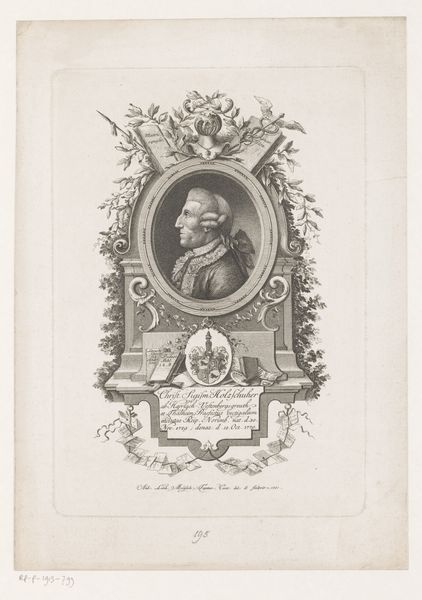
engraving
#
portrait
#
baroque
#
academic-art
#
engraving
Dimensions: height 161 mm, width 112 mm
Copyright: Rijks Museum: Open Domain
Editor: So, this is a Baroque engraving titled "Portret van Nicholas Bruyant" by Paulus Pontius, created sometime between 1638 and 1657. It's striking how the portrait is framed within this elaborate architectural structure. I’m curious, what visual elements stand out to you in this piece? Curator: Immediately, the formal composition grabs my attention. Notice the stark contrast in textures, the smooth portrait juxtaposed with the highly ornamented framework. This tension creates a visual push and pull. Consider the calculated use of line—etching defines the physiognomy of Bruyant and meticulously articulates the architectural setting. Do you observe how the circular medallion containing the portrait echoes the celestial globe above? Editor: Yes, I see what you mean. It almost seems like a deliberate attempt to connect Bruyant with the cosmos, reflecting his profession. But how significant are the textual elements woven into the structure? Curator: The text, serving as an integral part of the artwork, delivers information while also structuring the visual field. The lettering is formal, yet subordinate to the portrait and ornamental framework. A play of intellect and authority occurs here. The Latin inscription surrounding the portrait, "Per art ad astra, Sapiens Su," translates roughly to "Through art to the stars, know yourself." Consider the inscription acting as both label and pronouncement, a claim on identity itself. Editor: So the engraving presents not only a likeness, but also a structured assertion of Bruyant's intellectual prowess and status? Curator: Precisely. It is the formal arrangement that generates meaning, presenting the man as a scholar. How fascinating that the semiotic arrangement and philosophical intention of art can merge, wouldn’t you agree? Editor: Definitely. Looking at it now, the arrangement really underscores how intentional the piece is in crafting Bruyant's image. Curator: Indeed, a potent reminder that an artwork’s construction significantly shapes our perception.
Comments
No comments
Be the first to comment and join the conversation on the ultimate creative platform.
